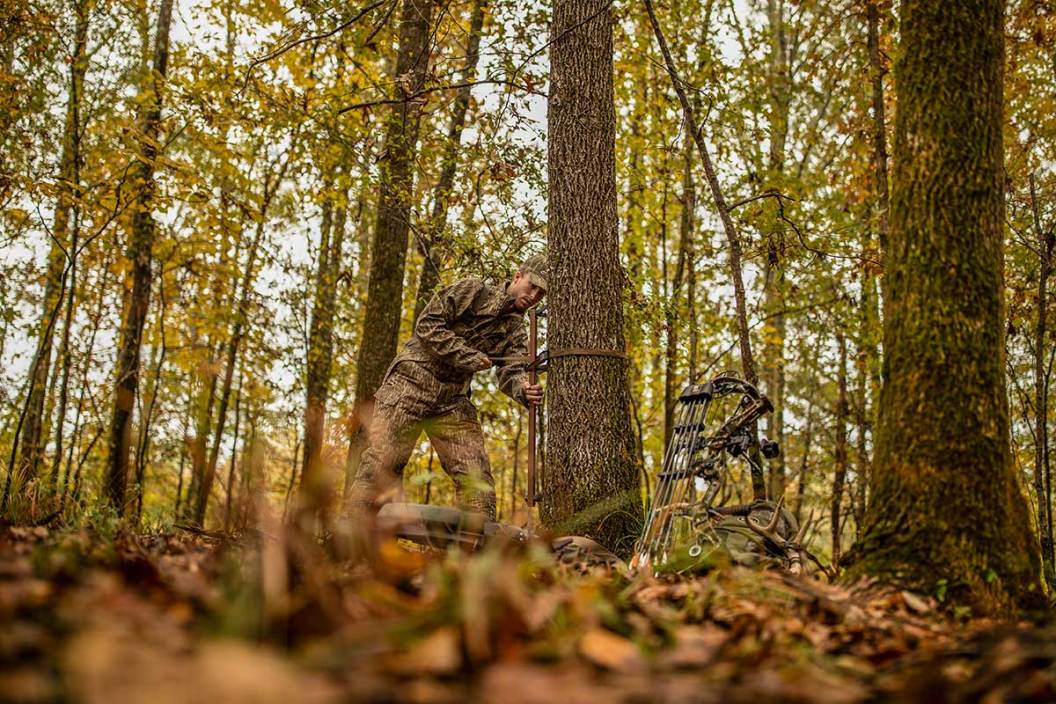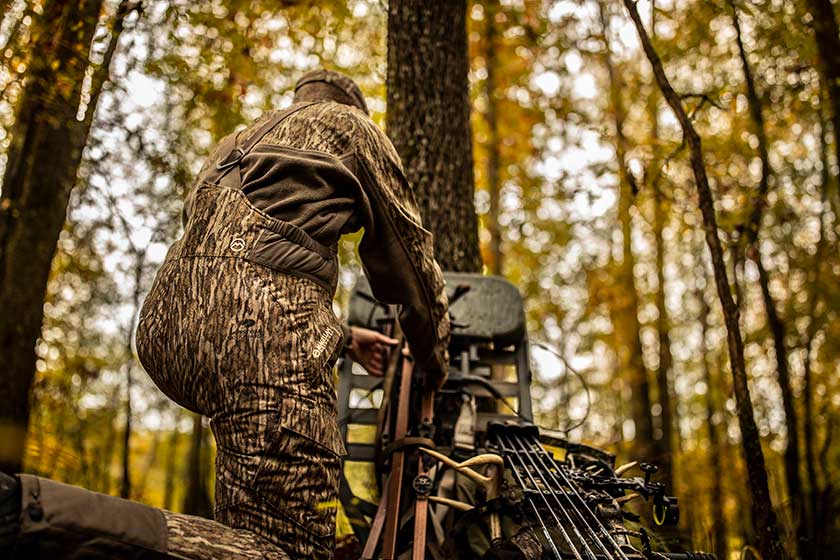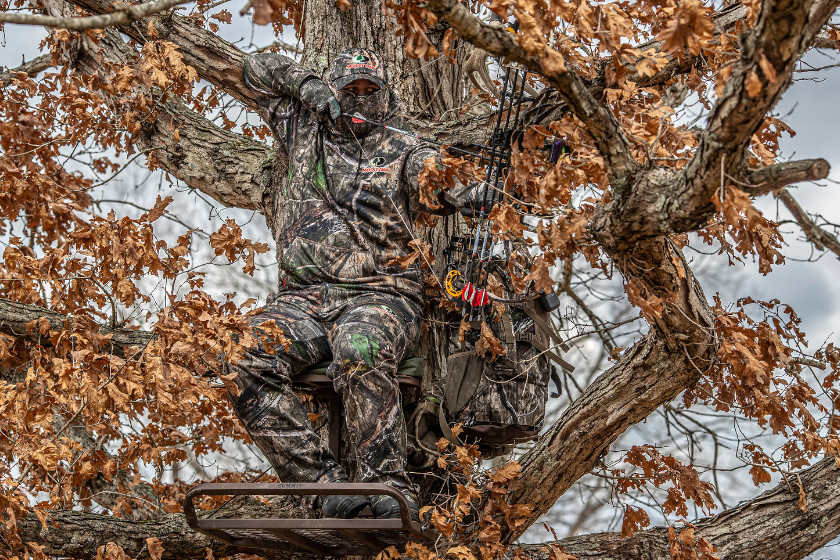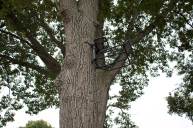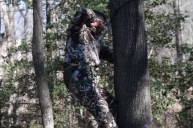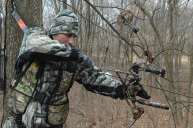Hunting from a treestand—a.k.a. a ladder-accessible perch affixed high up in a tree—offers a greater vantage point and the opportunity to get a better shot at bringing home that trophy buck. Indeed, many hunters prefer a treestand vs. a ground blind for bagging whitetails.
But putting yourself up high off the ground without regard for treestand safety comes with some very real risks, according to Dr. Alan Lazzara, who spent five years researching hunting-related visits to the Henry Ford Health System. His hunting injury research indicates that hunters are two to three times more likely to be injured by a fall from a treestand than from a firearm. Not to mention, some 25% of all Wisconsin bowhunters have fallen or nearly fallen from a deer treestand in the past, according to recent numbers released from the Wisconsin Department of Natural Resources.
Don't become a treestand fall statistic! Take these five steps to ensure safety when hunting from a treestand.
1. Wear Approved Treestand Harnesses—and Properly
A treestand hunter should never let their feet leave the ground without strapping into a fall-arrest system or full-body harness that meets the standards of the Treestand Manufacturer's Association (TMA). Single-strap belts or chest harnesses should not be used. Always use a full-body harness in the manner it's designed. There should be no slack in the tether while sitting.
New York state recorded six treestand deaths during its 2017 hunting season; five of the deceased hunters were not wearing a full-body harness and the sixth was wearing one, but it was not attached to the tree when he fell.
2. Use a Haul Line for Transporting Gear
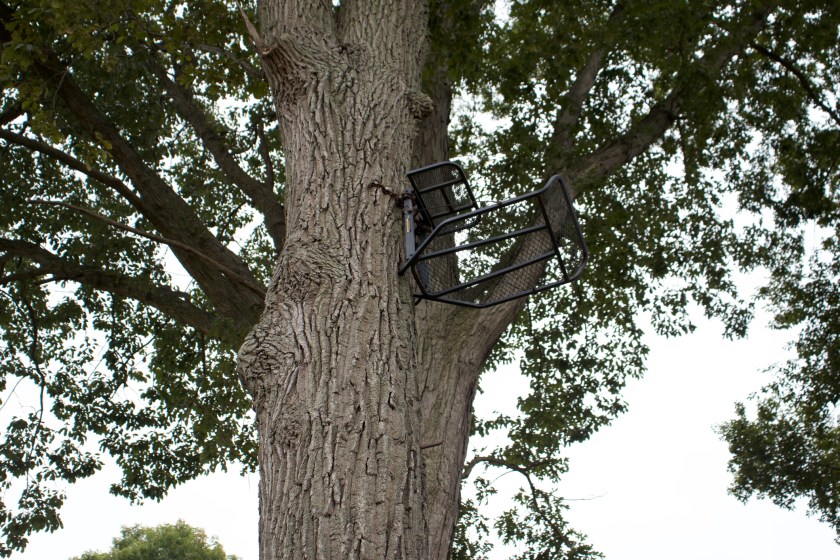
Getty Images, Sooshots
For safe climbing, both hands should be unencumbered while getting into or out of a treestand. Even climbing while wearing a backpack can throw off a hunter's weight distribution and the pack itself could get caught on branches or concealment coverings on treestands. Getting tangled is an easy way to have an accident.
To transport gear and weapons up and down, hunters should use a haul line, i.e., a rope or commercial cord attached to whatever needs to be pulled up or let down. It needs to be sturdy, with the correct length and diameter for the intended use.
3. Know Your Equipment's Limitations
The owner's manuals and manufacturer's information that come with treestands and harnesses provide a wealth of knowledge. Read them. A treestand's recommended weight limits should be respected. Adding more weight than the treestand is designed to hold is a recipe for disaster, so don't push it.
Take the time to inspect your safety harness before putting it on and then again before putting it away. Tears and tangles can impede the way these products work.
4. Skip Old or Homebuilt Treestands
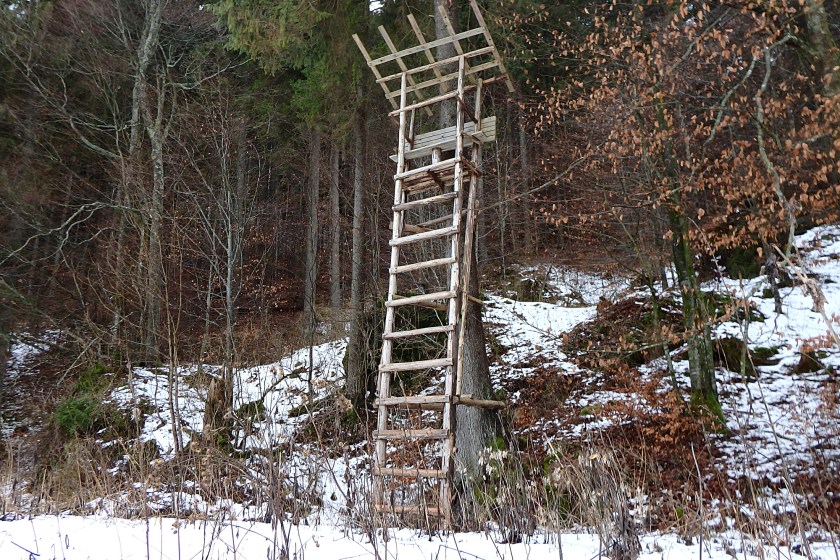
Getty Images, Danler
The woods are speckled with old wooden treestands left behind by old-timers. Sitting in that stand might bring a sense of comfort and connection, but it's probably better not to chance it. Years of decay might not be obvious to the naked eye, but they sure will be when you hear that creak underneath as you plummet to the ground.
The TMA also recommends that hunters never use homemade stands or any stand that has been altered—advice that can be hard for some hunters to accept but could prove painful or even deadly if unheeded.
5. Climb Up and Down Slowly
This could be considered the golden rule of treestand safety. While climbing into or out of or hunting from a treestand, don't rush.
Make slow, methodical movements, and don't skip steps while climbing.
Use the three-point of contact rule: Make sure at all times that you have three points of contact with the ladder or stand when moving. For example, when lifting a foot, both hands and the other foot should be in contact with the ladder.
5. Don't Go It Alone
If you can, hunt with a friend; but if that's not an option, tell someone where you will be hunting and the time of your expected return.
Have a communication plan in place that includes emergency devices such as a cellphone, two-way radio, personal locator device, signal flare, or whistle. Make sure these devices are in a place that can still be accessed in the event of a fall.
READ MORE: How Axis Deer Are Impacting the United States
